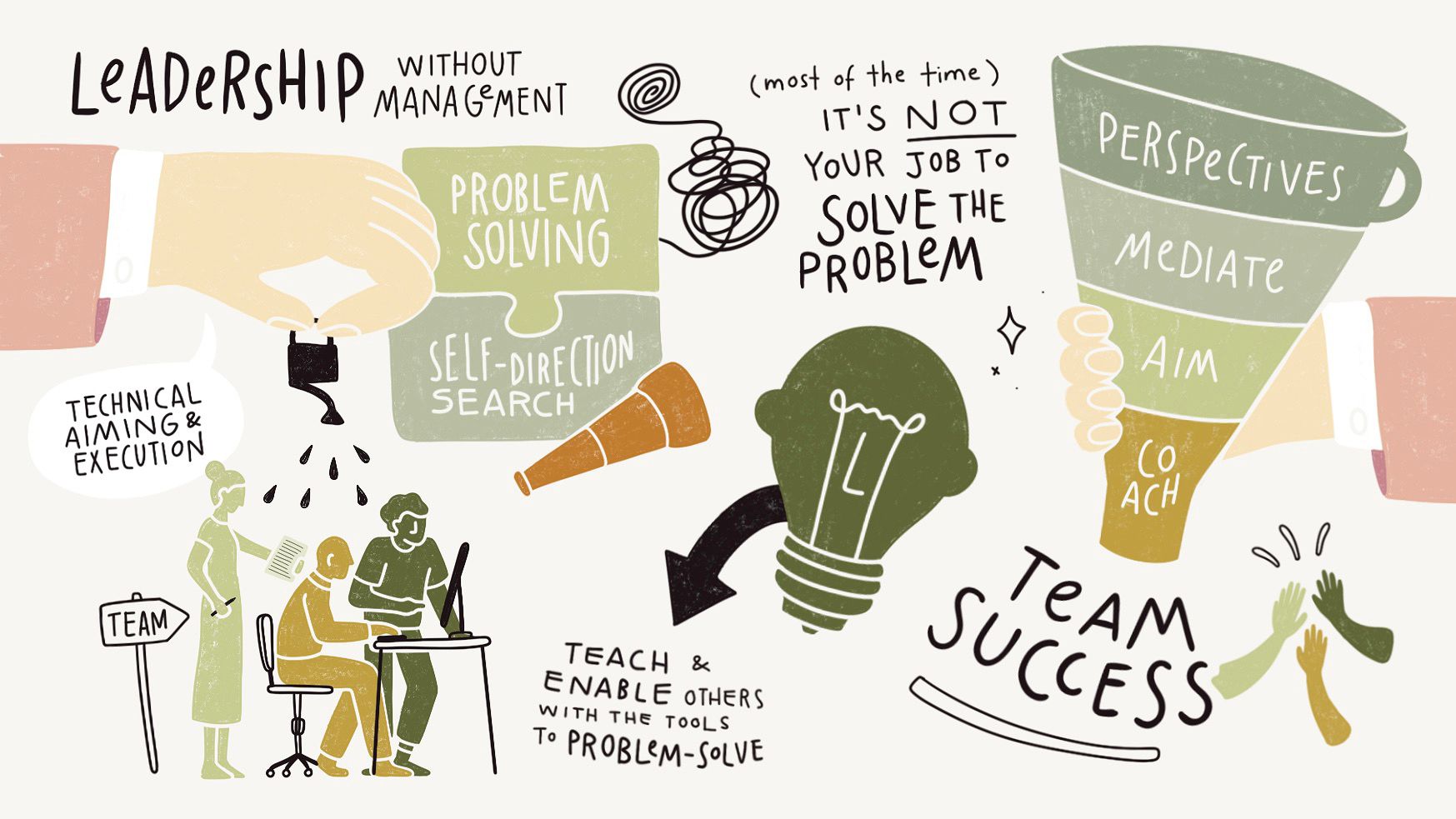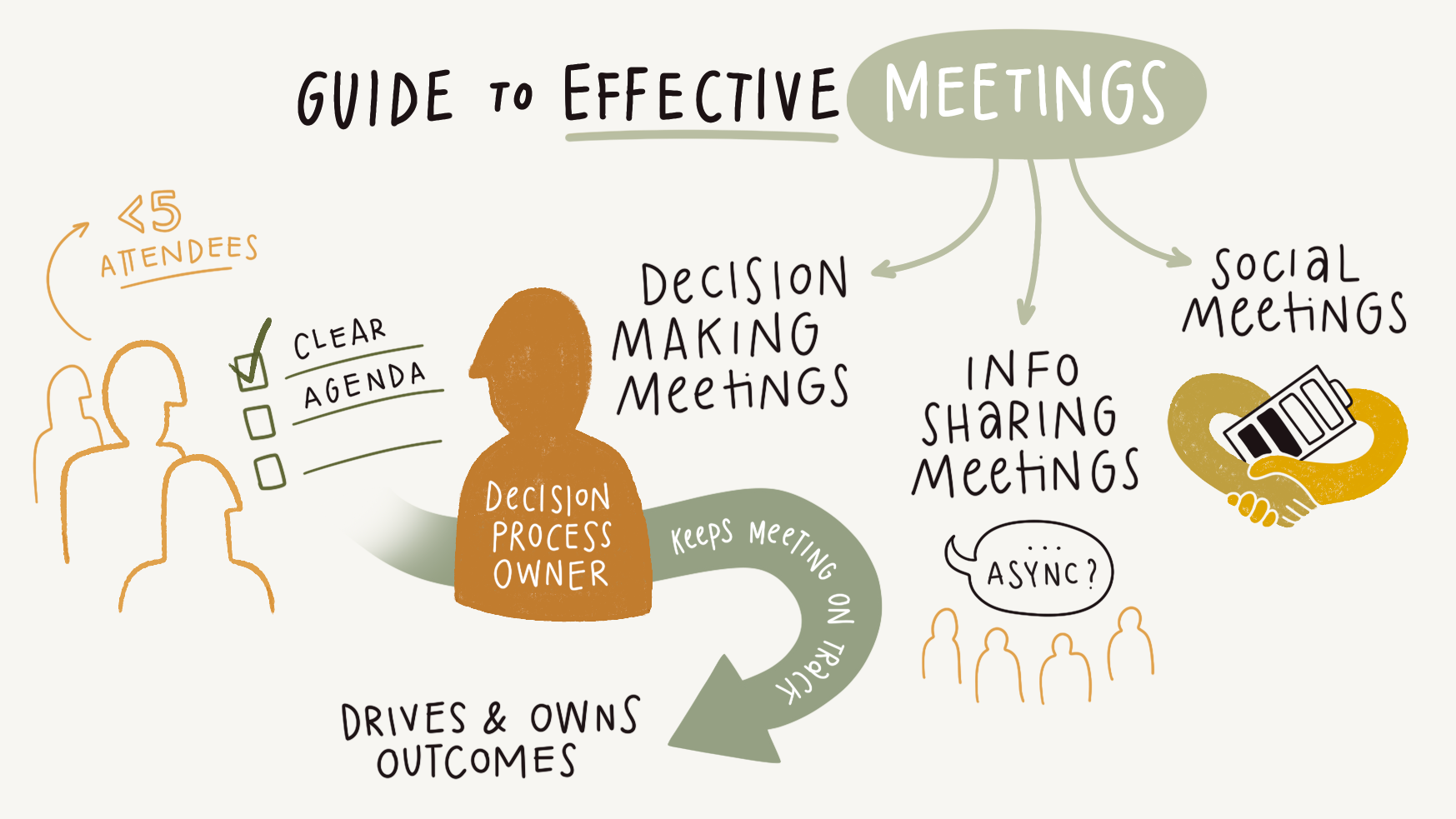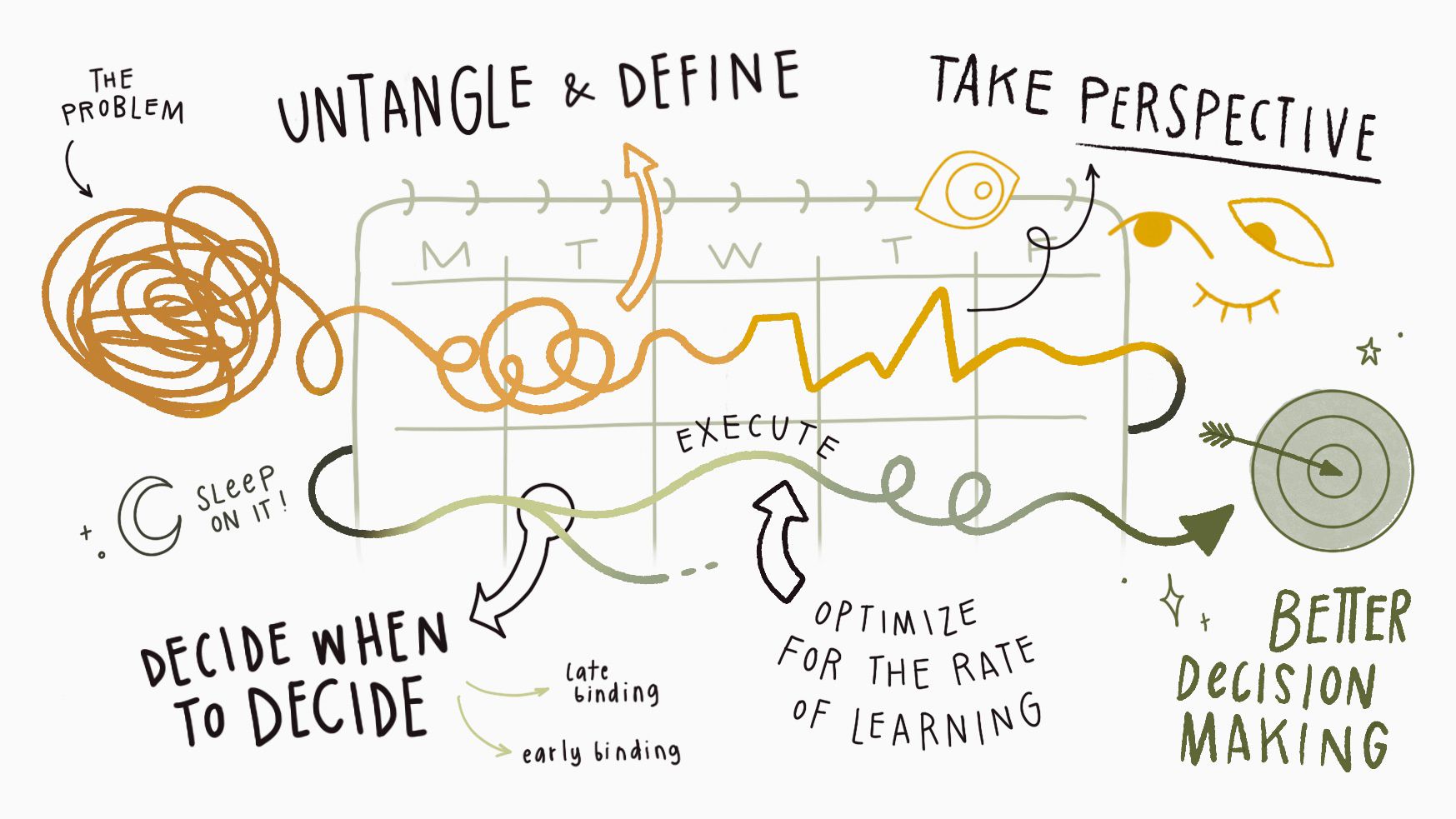The Principal Engineer's Handbook
Leadership without management: the what, the how, the tools, and how to measure success as a Principal+ engineer.

Leadership and management are often conflated, but they are distinct and complementary skills. As a principal engineer, chances are you have experience with both, but your focus is now less on building the organization (planning, resourcing, managing expectations) and, instead, on improving technical aiming and execution across the organization: helping teams navigate through complex technical, product or organizational tradeoffs, mediating and resolving escalations, and driving technology and process improvements.
The role of most Director and VP managers requires that they balance their time across a wide range of teams and initiatives, which gives them breadth but limits their bandwidth and ability to go deep: they may not have the time to do a thorough review of the proposed architecture; dig deep into technical or cross-team product tradeoffs; objectively mediate a gnarly cross-team escalation. If the Director+ managers are by necessity wide-and-shallow (T's), Principal Engineers are focused-and-deep (I's). A close partnership across these complementary roles is a key building block for organization's success.
What does a Principal Engineer do?
The role is a combination of self-directed search and hands-on problem solving of topics that are bubbling up from within the organization or are delegated to you by the executive team. For example, your time may be spent on self-directed reviews of design documents and code, engaging with other managers and leaders to help navigate tradeoffs, or leading a deep-dive evaluation of a proposal or product at the request of a Director or VP—you are their trusted technical co-processor.
Self-directed search relies on deep expertise, hard-won wisdom, and good judgment. You need to invest in open-ended exploration (reading design docs, code reviews, etc.) and apply active pattern matching—e.g., identifying challenges surfacing across projects or teams. Observing is not enough, however. To be successful, you also need to exercise good judgment—what is worth flagging or escalating? now, or later? with whom?—and have good organizational awareness to effectively engage, influence, and effect change. Often, you are the connective tissue: connecting individuals and teams, manufacturing serendipity to open up collaborations, and quietly supporting and cheering from the back.
Hands-on problem solving is born out of close collaboration with your organization's leadership team. They rely and may call on you to help with a specific project; vice versa, you need to partner with them to help unlock resources and drive prioritization for technical and cross-team initiatives that may otherwise not surface or remain overlooked.
How do you identify and prioritize opportunities to focus on?
Knowing where and how to spend your time is one of the hardest evergreen questions for every Principal engineer. The opportunity space is vast. The terrain is changing continuously. Your superpower is the ability to engage deeply, which requires staying flexible and continuously re-calibrating where and how your attention is spent. Be thoughtful about your role and ongoing engagement; know when to extract yourself and be thoughtful on what you commit to. As a helpful role rubric…
- Owner: directly responsible for aiming, execution, and outcome.
- Stakeholder: responsible for aiming within function or domain.
- Supporter: ad hoc and on-call engagement, as necessary.
- Friend: no structural commitment, volunteer.
In practice, you can be an effective owner on one or, at most, two initiatives and consult as a stakeholder and supporter across a few more. As a result, the hard part is not sourcing opportunities but filtering: saying "no" to demands on your time and continuously reassessing your role in existing commitments; the hard part is being deliberate in what important problems you have to say "no" to. Don't get spread thin.
Develop and invest in strong horizontal partnerships with other product and engineering leads—managers and ICs—across the organization. You need to live at the border between product and technical priorities and strategy and be equally versed in both to guide technical aiming and execution across the organization effectively.
What does success look like for a Principal Engineer?
The tactics of your engagement style and definition of success depend on the organization and stakeholders you support. In some cases, the role may have a strong external component, as a visible technical representative and partner with the external community or customers, and in others, it may be inwardly focused as a technical leader within a specific product or a problem domain—e.g., security, infrastructure, ML, API design, etc.
Principal Engineers' common leverage point is in the friction areas and unrecognized opportunities across teams and products. Teams optimize for their local optima needs; your job is to help guide the organization towards better global outcomes. All decisions at this level require tradeoffs across teams and projects, execution speed, and business priorities. Your scope spans teams and your leverage is as a process facilitator and trusted guide through this foggy landscape.
Archetype: facilitator, partner, and mentor
Often you are the most senior person in the room. Most of the time, this does not mean that you are the most knowledgeable person in the room for the specific problem domain, although your experience and broad expertise may give you a perspective and insights that others don't have.
It's not your job to solve the problem. Your job is to partner with TLs and experts closest to the problem domain and work together to identify the path to the best outcome. Chances are, you are in the room because there are trade-offs or decisions to be made that span beyond the immediate team, and your job is to serve as an objective and impartial guide on the journey. The team should own the outcome and execution. Your responsibility is to improve the quality, aiming, and outcome of the decision process.
Focus on perspectives. The combination of senior role and broad engagement gives you a neutral and objective perspective on technical and business priorities: practice active listening to understand the team's objectives; provide the team alternate points of view, or competing requirements, that they may not be aware of. Partner with and support the leads. You're not there to over-rule them—that's a recipe for failure because they own execution. Done right, the team should feel ownership of the outcome and acquire new skills to, hopefully, mediate similar outcomes by themselves in the future.
Build technical leaders. Your job is to identify the gaps and create safe leadership spaces for others to grow into, a process that requires a combination of effective sponsoring and mentorship. The former is about enabling and sometimes actively encouraging folks to lean into an opportunity, and the latter is about supporting their execution. Your success is their success; their success is a long-term amplifier of your and organization’s success.
How do you capture and prove your impact?
The impact and contribution of a Principal Engineer typically span across technical, product, and organizational domains. Unlike a manager role, which leans on direct organizational and team impact against organization priorities, your success relies on successfully claiming shared credit across teams and initiatives.
Establish clarity about your role upfront—see role rubric above—with yourself and each team you engage with. Doing so helps clarify your commitment and desired outcome. For example, if you're engaging as a consultant, ensure that others understand that and leverage your time and expertise in the appropriate format.
Recognize that the definition of success may look and feel different. Past career milestones usually came in the form of launches and landings, in which you played a direct and critical role. Moving forward, success and leverage will often come through empowering and teaching others: engage, mediate, coach, ..., and quietly recede without anyone noticing; pave the paths with senior stakeholders to reduce or eliminate resource contention and cross-team dependencies; prune complex design trees by clarifying desired state and principles of the overall system.
Tactical everyday tips and best practices...
- Protect and leave large blocks of uninterrupted time on your calendar. The nature of the role requires time flexibility, enabling you to jump on board an escalation or pursue a self-directed lead on short notice.
- Lead by example and model the behavior you want to see in teams you engage with. You are often the most senior person in the room. Pay close attention to the language you use and how you engage. Even when you're able to see around the corner, take the long route and lead the team through your thinking; be careful on how you frame questions — e.g., lean on "I am curious..." and "Help me understand..." instead of a simple "Why?", which is more easily perceived as a challenge or confrontational. Model humility and figure out how to help others succeed.
- Be deliberate about your exposure and role in day-to-day organizational information flow. Partner with other product and engineering leaders to ensure that you're part of key planning, review, and org conversations. At the same time, be clear with yourself and others on where you do vs. do not need to be involved or consulted on—see 1.
- Build close horizontal relationships with other engineering and product leaders. The best results for both come from close collaboration, where they're able to focus on macro organizational execution and needs, and you can leverage your expertise to unblock technical discussions and improve cross-team execution across projects.
- Cultivate weak ties by practicing active curiosity. Reserve time to explore outside of your primary domain, volunteer your help, and pay it forward. Before long, you'll be manufacturing serendipity by connecting people and initiatives. Conversely, a robust network of weak ties can make all the difference in your ability to activate an idea or a project.
- Proactively engage teams and TLs. Counterintuitively, the number of inbound requests for support or feedback from individual teams may not be very high. Most are reluctant to volunteer or share their challenges with senior stakeholders. Use your position and time flexibility to random-walk (domain, function, and level) the organization: keep an ear to the ground and identify hidden gaps and opportunities.
- Share your findings and thoughts to draw out feedback. You have a broad vantage point that others don't have access to. Volunteer your findings and thoughts to reach a wider audience and draw out feedback—e.g., via a semi-regular "on my mind" email that shares recent insights or findings with a broad group.
- Solicit feedback and monitor lagging indicators to adjust your execution. Being clear on your role across projects helps establish expectations and opens opportunities for better feedback. Longer-term, track lagging indicators like team re-engagement and product success: are the teams or individuals you've worked with coming back; did your engagement result in positive launches and landings? The further you go, the more abstract and delayed the feedback becomes, be proactive about it.
- Maintain a breadcrumb trail and document your engagements. Draft 1-pager for each commitment that clarifies your role, title, time commitment, and shared goals upfront. Being explicit establishes clear shared expectations and provides an artifact to evaluate your success against in the future.
Subscribe to Ilya Grigorik's essays
Receive latest updates in your email inbox




